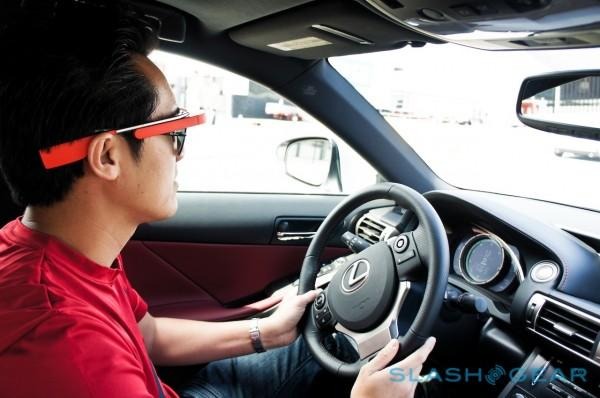Congrats, Google Glass Researchers, Obviousness Successfully Stated
Of all the faults, goofy aesthetics, and generally questionable decisions around Google Glass, the fact that wearing it on your face means you might not be able to see quite as clearly seems a pretty commonsense issue. Still, a team at the University of California, San Francisco opted to look at just that, trying to figure out whether a head-mounted display could in fact present a significant risk to peripheral vision. It'll come as little surprise to find that having a chunk of electronics poised over your right eye does indeed block off some of your visual field.
The researchers looked both at three test subjects wearing Glass and with 20/20 vision, and at a selection of in-the-wild photos of Glass users, to figure out how the wearable was commonly sported.
For the live wearers, perimetric visual testing – which assesses field of vision – was carried out, first when they were wearing Glass, and then when they wore a set of regular eyewear of similar color and temple width.
According to those findings, there were "significant" blind spots in the upper right quadrant for the Glass wearers, which were not observed with the regular glasses.
"An analysis of 132 images indicated that many people wear the device near or overlapping their pupillary axis (a line perpendicular to the surface of the cornea, passing through the center of the pupil)," the study authors point out, "which may induce scotomas [blind spots] and interfere with daily function."

It seems like common sense, though that's not to say there's nothing of potential interest here. For instance, a pertinent question remains as to whether the availability of data while wearing Glass is worth the trade-off in ergonomics, something the UCSF study does not address.
In fact, the team there ignored potential software distraction altogether, opting to look solely at physical issues.
Conspicuous by its absence has been any talk from Google about the consumer version of Glass, and in fact there was no keynote mention of the wearable during Google I/O in June. The company has done some minor outreach work, attempting to dissuade lawmakers from banning Glass when worn by drivers, though the distraction issue there seems more focused on notifications than the physical hardware itself.
SOURCE JAMA
